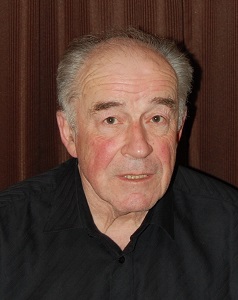
Davor Grünwald
Davor Grunwald became the first educated industrial designer in Croatiaand as such has been known in Croatian industrial design history. He received his diploma in 1968 in Vienna Academy of Applied Arts, department for Industrial Design. From 1968 to 1975 he worked in Zagreb, Croatia and from 1975 in Canada. He designed products for various firms and covered different industrial fields.
For design of machine tools he received the 1974 Award of City of Zagreb and Golden medal in Leipzig, and in 1980 he received the Canada Design Award for design of geophysical device. He was included in Croatian Bibliographic Encyclopedia and Encyclopedia of Fine Arts. Very soon his Monograph will be published, designed by world renown Croatian graphic designer Boris Ljubicic.
When Davor Grunwald sent me, in February 2016, the photographs of his realised projects, various technical products which exudes with modern and elegant lines and compact forms I was delighted to get the opportunity to get to know him as a person who enhanced and significantly contributed to the development of industrial design in Croatia.
Besides the photographs he sent his Memoirs excellently written, concisely with many interesting details, humor and honesty. On my Memoirs comments Davor Grunwald has said:
Davor Grunwald: “I like to write and explore how to express something with minimum words. I am looking in everything for its YIN and YANG, balance in writing, designing and solving the lives challenges. This principle I presented in my Prodesign Trade Mark, the name of my consulting office in Zagreb.”
This dialectic principle, rather the unity of opposites, is characteristic for Italian patron of the beauty, Leon Battista Alberti (1404 – 1472), architect and author whose most inspiration he found in nature and who also unites the opposites, searching for ideal, respectively the beauty which leads to the “source” and recognition of God. His term of beauty stresses compliance of all parts of the whole so that nothing could be added or removed, so that harmony of the whole could not be disturbed. Harmony, respectively the beauty which decorates Italian arts, architecture and fashion design inspires many , and Davor Grunwald was inspired by Italian industrial design.
Jasna Lovrinčević: “In your biography it is mentioned that you visited the exhibition of Italian Design in 1964 in Museum of Arts and Craft in Zagreb and that motivated your for your future profession of industrial designer. Even then, Italians were famous for beautiful and practical designs. What did fascinate you the most at that exhibition, aesthetics or functionality of the products?”
Davor Grunwald:”As I recall that were the home every-day items, glass, ceramic, kitchen utensils. I knew nothing about functionality, aesthetics or ergonomics therefore I did not observe these objects from these criteria. Something simply happened to me subconsciously. I felt immense desire to get into the position to shape the objects with which I was surrounded. I did not even know the meaning of the word “design” ! In teenage years I had predisposition and the need to express myself through the drawings. I took the drawing course by prof. Ruzic. As a kid I was making my own toys with the carpenter in the neighbourhood. I had there my “workplace” since I was constantly working on something. One would say, my natural gift for creative, practical expression came through genes, my father was very creative.
One door away from the entrance to the Museum of Arts and Crafts there was a plate with the name: Center for Industrial Design (CIO). That is where I learned all about where I could study industrial design. Disa Radic, the founder and director of CIO, professor at Academy of Fine Arts in Zagreb, started CIO two years earlier. He explained to me that there is only one school in Europe for studying industrial design, the Hochschule fur Gestaltung (HNG) in Ulm, Germany. He mentioned that there is something in Vienna, Austria as well. HFG was built on the foundation of Bauhaus. The professors were former students of Bauhaus. Subjects of study were divided, half technical and the other half creative/artistic. Students of all years (four) had shared common area for conducting practical projects. Students had individual attention by mentors. HFG was founded in 1953 with capital of brothers Schol from USA. The school unfortunately did not last long, it has been closed in 1968 because the professors could not agree on how the school should proceed. The city of Ulm refused to support the school financially.”
Jasna Lovrinčević:” Why did you decide to study in Vienna and not in Italy since you were motivated by Italian industrial design?”
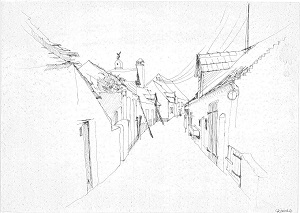
The Village in Burgenland – Davor Grünwald
Davor Grunwald: “In Italy, at that time, there were no such schools. The products were designed by natural talented craftsman, architects, people with applied arts occupations. That was the case throughout the world. During the Bauhaus period the name Industriele Formgebung or Gestaltung was “born”; in USA, Industrial Design and in Croatia, Industrijsko Oblikovanje. Italians always had a keen eye for “beauty”. Well, the literature is suggesting that the first industrial designer was Leonardo da Vinci with his machines and predictions of future technological development. I dare to say that the modern industrial designer has to be a “little Leonardo”.”
Jasna Lovrinčević:”How did you prepare for the entrance exam and what was the criteria to start with the industrial design studies in Vienna? Which was the study program?”
Davor Grunwald: “I could not reach Ulm because I did not have a visa to enter Germany. I arrived instead in Vienna where prof. Hoffman received me well. He explained to me how I had to prepare myself for the entrance examination. Prof. Hoffmann had established a Department of Industrial Design at the Academy of Applied Arts four years earlier. It was based on the Ulm’s HNG school model. Many Art Schools across Europe and USA did the same around the 1970’s.
I followed Prof. Hoffmann’s instructions, that was to tour on my Vespa (scooter) throughout the Burgenland and sketched the villages. I built some practical small products, the way I felt it. The entrance exam lasted three days. The tests were very demanding. Prof. Hoffman and his team chose five candidates out of thirty. I was one of them! For example the test to see how the candidate is technically observant, was to draw a small sports airplane. The girl sitting next to me was drawing the propeller in the shape of the letter “S”. She did not pass the exam! Another example is that we had to create an element which when multiplied could be joined together without empty spaces. On this topic many candidates failed! All in all prof. Hoffman was looking for multi-talented candidates, technically and artistically. During the four years study we had intensive lectures of production technologies and material studies. We visited many manufacturing facilities. We conducted many colour and shape projects using two and three dimensional exercises. Students from all four years shared the common space to conduct projects/assignments. We were all together from the four year studies 20 students, 5 per year.”
Seminars for Students of Industrial Design in Zagreb
The modern industrial design programs, as Davor Grunwald explained, came from the school of art “Bauhaus”, founded by architect Walter Gropius in 1919. Famous personalities were involved, among others, Wassily Kandinsky and Paul Klee. The unity of ART and TECHNOLOGY was implemented. Supported by regular consultations with the industry, emphasis has been put on experimental work in theory and practice. In extension this concept is present, in its rudiments, in the School of Design in Zagreb.
Jasna Lovrinčević:”In your biography it is mentioned that you held seminars in 1993-1994 with students of the School of Design in Zagreb. What were the topics you emphasized? Can you compare the programs of the School in Zagreb with those from Vienna?”
Davor Grunwald: ” The Zagreb School of Design at the Faculty of Architecture was established in 1989. At that time I was already 14 years in exile in Canada. Therefore I do not know how it was done. I just know that I wrote the program based on my experience in Vienna, before I left for Canada in 1975. I was asked to do this by my colleagues from ULUPUH (the Association of Applied Artists). During the seminars I found out that the Zagreb school operates in very similar ways compared to the school in Vienna, like I wrote in my proposal. Besides, two younger colleagues graduated in the Vienna school and became professors at the Zagreb School of Design. The difference I could detect is that the Zagreb school places strong emphasis on wood technology since Croatia has a long tradition in producing wood furniture. Of course, the computer technology has now caused big changes (everywhere!). These young students do not know “how to hold the pencil” but they know all about the sophisticated computer programs and are able to produce fancy presentations. But in order that the computer becomes “smart” it has to be filled with massive amount of information. Here is where young people are a little bit “short”. In other words with the conceptual stage of designing, the computer is useless.”
The Zagreb Period
After Davor Grünwald graduated and obtained his master’s degree in Vienna he worked for seven years in Zagreb at different factories: Prvomajska (machine tools factory), calculating machines factory (TRS), scales and waiving factory, pencil factory (TOZ). When Davor Grünwald received the Award of City of Zagreb, the architect Bernardo Bernardi stressed that Davor Grünwald after only 6 years has achieved the highest professional standards and that he has proven to be capable with great sensibility to analyse all aspects of design from perspective of engineering technology, functionality and ergonomics.
Jasna Lovrinčević: ” What was the theme of your master’s thesis? Zagreb period from 1968- 1975 was extremely important in your professional growth. During that time you received significant awards. Could you please elaborate a bit more about that?”
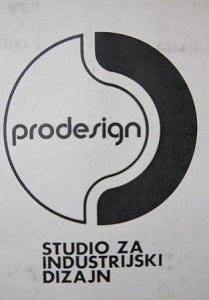
Prodesign Davor Grünwald
Davor Grünwald: “I graduated in 1968 and one year later I completed my master’s degree from the same institution in Vienna. In Zagreb I already had contacts with Prvomajska (machine tools factory). I decided to work on the thesis for my master’s: Machine Tools Ergonomics. This proved to be an excellent choice because in this way I was ready for complex industrial design of machine tools. I founded my own industrial design consulting company and named it PRODESIGN. I helped establish the department for industrial design in ULUPUH ( Applied Arts Professional Association) with which I received a freelance status and social insurance. I received awards for my electronic calculators from BIO (Biennale of Industrial Design), Ljubljana, Slovenia. For machine tools I received the prestigious City of Zagreb Award and a gold medal in Leipzig.
Unfortunately, in 1974 the communists’ confiscated all my Pro-design Office materials and prohibited my company business, how they said “illegal” work. All my contracts were cancelled. Therefore in 1975 I was forced to emigrate to Canada. On that occasion, Dr. Prof. Goroslav Keller wrote an article in the newspaper with the title: Why Davor Grunwald left? In that article G. Keller described what I had offered to Yugoslavia (Croatia) and what incredible indolence existed within the ruling communist leadership. At the end he wished me a successful carrier in Canada. I fulfilled his wishes! Here is one more detail from this seven years of the Zagreb period. While I was working on machine tools I noticed that the operators where sitting on wooden boxes next to the machines. Professionally sensitive I developed, on my own initiative, a family of chairs for this specific application. The Director of the tubular furniture factory Jadran noticed that and offered me, on the spot, a position as Director of Design Development. I accepted the offer! But three months later the same director insisted that I should join the communist party. I declined and left this well paid job the same day.”
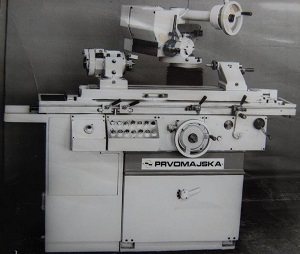
Sharpener 1972 ( Photo – Davor Grünwald)
Jasna Lovrinčević: “For the design of machine tools you got the Award of the City of Zagreb. Then the architect Bernardo Bernardi said that you took one of the most complex and responsible tasks in the field of design, despite the fact that there was not the tradition in Croatia (former Yugoslavia)of using industrial design of machine tools?
Davor Grunwald: In the very beginning of my professional work, immediately after my graduation, I was lucky to have a contract with Prvomajska, the redesign of automatic sharpener and automatic lathe. The ergonomic study of machine tools that I had conducted during my master’s, came now very handy. In analysing the sharpener I discovered that the base was visually and physically unstable. It went down in a cone shape. I asked what was the reason for such “design”. The answer was, the engineers wanted to have “a human body shape“! Immediately I changed the base to a square one made of welded steel plates. Traditionally their bases were made of cast iron and they were masters in this technology. I was able to prove that the welded bases were cheaper to produce and more convenient to store electronic components. The logic of square welded bases was implemented on automatic lathe as well. Traditionally machine tools in Europe were painted in green “Hamerschlag”. My suggestion was to paint the base in dark brown and the top in light grey – with these changes the machines appeared lighter and smaller. A control panel was organized, instrumentation at eye level and switches at the height of light bended arm. Access to service was determined by ergonomics optimum. These machine tools received the City of Zagreb Award and a gold medal in Leipzig. Unfortunately these machines were used relay technology and during the war in Croatia 1990-1995 there were no new developments. In the meantime the competition implemented the computer technology (CNC) so Prvomajska was not any more competitive and at the middle of 1995 it ceased to exist.”
Electronic Desk Calculators
The Davor’s Zagreb period was characterized by the design of electronic desk calculators. It was around the early seventies. Dr. Goroslav Keller said in his article in 1975 that Davor Grunwald mastered very early the complexity of electronic desk calculators, integrating available technology and ergonomics, using his knowledge and talents. It was interesting to hear what Davor Grunwald has to say about that.
Davor Grunwald: “Immediately after completing my study of industrial design in Vienna I returned to Zagreb. I got a contract work with the calculating machines factory TRS. At that time transistor technology became available behind the “iron curtain” (communist countries bordering western Europe) and TRS decided to develop an electronic desk calculator for which the market behind the “iron curtain” was secured. At that time the large corporations at the West like: Sharp, Toshiba, Canon, Adler, Casio, Olympia, Texas Instruments, just to mentioned a few, all have developed their electronic desk calculators. In my view they looked no so nice, obviously not being treated by the industrial design. I got confirmation recently of that fact by visiting vintage websites on Internet. From my study of electronic components and ergonomics I created a concept with recessed display. None of these Western companies had this distinct feature. Several years later some companies copied this, my original concept. TRS closed its doors at the mid – nineties when Croatia became a democratic country because it could not compete with the West.
Texas instrument in 1977 sought an industrial designer, educated in Europe, with experience designing electronic calculators. Based on my presentation I was invited for an interview to Dallas, Texas. The last question on the third day was, where I am really from? From Yugoslavia, was my response. Further discussion stopped immediately and I was asked to return to Canada.”
Canadian Period
In Canada Davor Grunwald designed important instruments in the field of geophysics, agronomy and computer technology. Particularly he described the dramatic development of high speed computer printers in the period 1981 -1984.
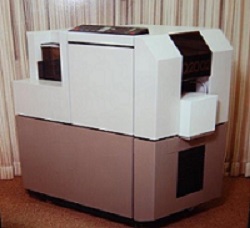
Printer Davor Grunwald (Photo Davor Grunwald)
Davor Grunwald: “I applied in Canada the experience from Zagreb. But I had to master first the English language, which took one year. At that time Canadian corporations had little knowledge about industrial design. So I developed a strategy, I entered corporations through the “back door”, I got hired as draftsman. Once inside the corporation I could quickly prove that I was “something else”. Through the efforts of the Canadian Association of Industrial Designers, corporations had slowly realized the benefits of hiring an industrial designer. I was one of the directors of the Association. My first job as industrial designer was with the Delfax Corporation which was developing fast computer printers based on new patented Ion Deposition technology. This was a superior method using Xerox’s laser. The Delfax marketing department had instructed their engineers to work on a printer concept with vertical paper flow. They justified this approach saying that such printer would take a smaller space. I knew that this approach was wrong from ergonomic reasons. In contrary, the Horizontal flow of paper, which I was proposing, would mean the same height at inserting and removing the paper. The marketing and engineering people would not listen. I had to do something drastically to convince them that my approach was the correct one. I made secretly, in my garage, in the span of two months a dysfunctional model in actual size. I also developed a new corporate identity, a new trademark, logo and applications (the old logo was hard to read). All these I presented on a Sunday in the President’s office. On Monday I came early, sat in my chair and waited. Suddenly a loud outcry filled the corridors, who did this, who did this? I presented myself in front of the President and gave him a lecture on industrial design. From that day on I got all what I needed, the marketing and engineering staff did listen to me and finally Delfax offered to the clients a “horizontal” printer.”
However, this extremely successful project was interrupted when the administrative team of Delfax was moved from Toronto to Boston. Davor Grunwald accepted an offer to join them. After three months he returned to Toronto because of a disagreement with his superiors. Shortly thereafter Delfax was sold to Xerox. Davor Grunwald continued to work in the Toronto area.
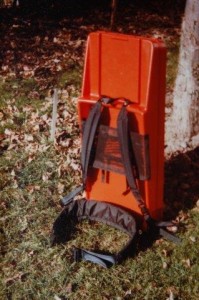
Geophysical Instrument (Davor Grünwald)
Davor Grunwald: “I founded my own consulting company with the name: Inventive Product Design (IPD) and worked on contract basis with several companies. Financially that was not enough. I accepted a position as industrial designer with one geophysical company. I was with them until my retirement. Still, I was using my consulting company IPD and worked on the side for several corporations. My portfolio has a large number of geophysical instruments and equipment. For one geophysical “backpack”, Genie, I received the prestigious Canada Design Award, 1982. The purpose of this instrument was to search for hidden barrels with toxic waste up to 10 meters deep. According to my information this was the first geophysical instrument in the world were industrial design was used. It had an exceptional ergonomics, integrated battery pack and a rational production technology suited for small runs.
Another significant design of geophysical instruments, using the electromagnetic principle, was the EM38, designed in 1985 but redesigned three times. It is still in production until now. This is a standard equipment to test the soil in agronomy and in archaeology for searching hollow spaces. The annual production of these instrument is 100 pieces at the most. But the purchase price is comparable to a small Hyundai car.”
An Anecdote With a Tractor in 1977 in Canada
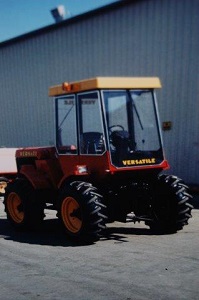
Tractor (Davor Grünwald)
Davor Grunwald: “In Winnipeg I helped a well-established American designer. He got the contract with a tractor company to help develop a new tractor based on an existing one . We agreed that each of us would develop a concept for presentation. The third young designer was hired as well. On the day of the presentation we had three concepts. The CEO of the tractor company carefully observed each solution. At the end he pointed at my concept and said, we will build this concept further since it has an European look. My boss was not happy but he had to obey the President’s decision.”
If I Need Something, Someone Else Could Need That Too!
Since 2008 Davor Grunwald has retired but remains active as industrial designer. He has developed his own style of design activities since he retired. His motto is now, if I need something that means someone else could need that too! He designs simple objects (which he needs), orders parts in specialized shops, assembles products in his garage and sells them through word of mouth. Here is a list of items he designed this way: a Porsche Boxster rack, 2012, 200 litres collapsible wine/oil barrel, 2013, and a minimalistic chair ELIPS, 2015 .
A Porsche Boxster Rack: A Porsche Boxster has a front and a rear trunk and the engine in the middle. For larger objects there is no provision. With a rack attached to the rear trunk cover larger objects could be transported. If the rack is not needed it can be stored in front of the trunk. I offered this concept to Porsche but they decline the offer explaining that they do not accept designs coming from outside.
A Wine/Oil Barrel: A wine/oil barrel consists of four identical roto- moulded side panels, and top and bottom panels (the same). A plastic bag goes into the barrel filled up with wine or oil. This principle is known as BiB (Bag in Barrel). Wine or oil could be taken from such barrel countless times, no air enters the barrel therefore the wine or oil does not get spoiled. The barrel has 5 casters and handles for easy manoeuvring. The project was commissioned by the Swiss group of wineries but they never signed the contract and never sent the retainer. I kept the project for myself.
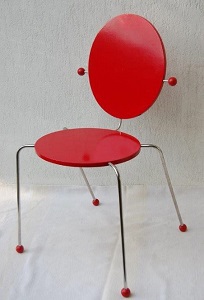
Chair ELIPS (Davor Grünwald)
Totally Minimalistic Chair ELIPS : I gave myself assignments to design a chair without needing a tooling, just to use CNC machines for production. The chair came out with superb aesthetics and functionality and is relatively cheap to produce. The design has been protected. I checked 6000 chairs on Internet and could not find any similar to ELIPS.
Sculptra Form 1964 – Now
One design has a special place in Davor Grunwald’s career. This is his very first design from student days called SCULPTRA.
Jasna Lovrinčević: “Your first design back to your student days is still actual nowadays. Why did you call this Sculptra? What was your impression of possible applications and who applied it first and for what?
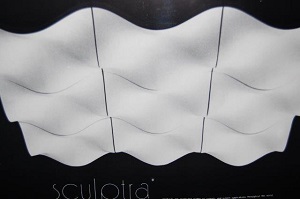
Sculptra (Davor Grünwald)
I tried to commercialized Sculptra because architects were interested to apply Sculptra in their buildings. For mass production the tooling was very expensive and the risk was great. So I gave up this idea. My wife experimented with Sculptra and created vases, ceramic tiles, wall compositions for the Croatian Embassy in Ottawa and at a Waterfront corporation office in Toronto. For them we designed furniture pieces using that shape which has association with water waves.
The name Sculptra was created. I took out the second “U” from the word SCULPTURE. So I could protect this new word. Few years back I sold the name to a pharmaceutical company for a large amount of money.”
Jasna Lovrinčević: “So far you worked in various fields and in each one you were successful. One gets the impression that you did not become specialized in a particular field. What is your general approach or how would you sum up your role in the development process of an object?”
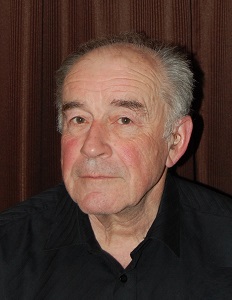
Davor Grünwald
